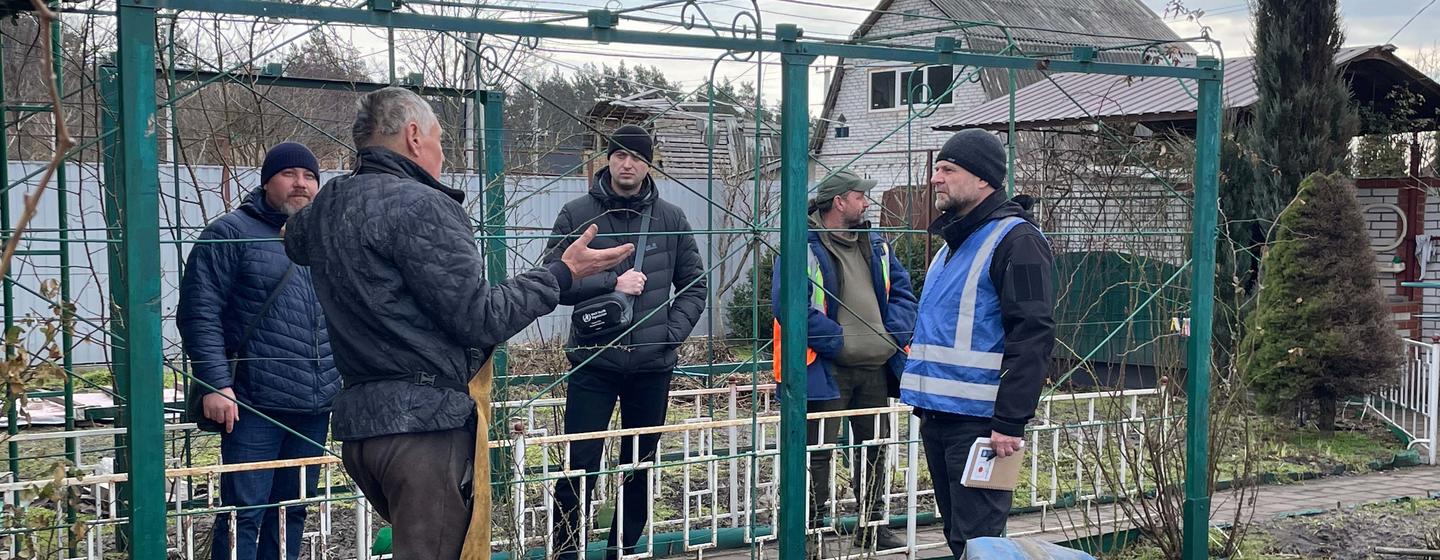“People are suffering greatly due to landmines,” Mr. Lobov told UN News, adding that experts have reported that almost one third of the country is contaminated with unexploded ordnance.
“Many adults and children have died,” he said. “We have the highest rate of such losses in the world. No one knows what will happen in a few months because the war is not over.”
New level of complexity
Explosive objects are scattered over an area double the size of Austria, putting 14 million Ukrainians at risk, according to UNDP, which reported that these deadly weapons have killed 226 people, including 17 children.
While more than 366,000 landmines have already been cleared, making Ukraine safe is a difficult and very expensive long-term prospect, Mr. Lobov said.
The World Bank estimates that the full demining package will cost more than $37 billion. Ukraine cannot solve such a problem alone, so international partners are helping, with UNDP becoming the lead coordinator of mine action in the country.
UNDP in Ukraine / A. Ratushniak Debris in just 40 settlements in the Kyiv region, where hostilities were fought, is so voluminous, it could pave a road from Ukraine’s capital to Berlin.
Since the First and Second World Wars, the Ukrainian Government has been managing risks associated with unexploded ordnance, but the current full-scale war is a whole new level of complexity, according to UNDP.
Unrolling new approach
Tackling this challenge requires additional equipment, tools, new skills, and assistance in coordinating efforts, Mr. Lobov said.
For its part, UNDP is rising to the challenge as well as supporting the victims and conducting information campaigns, with funding from the European Union and Croatia, Denmark, France, Japan, and the United Kingdom.
“Amid hostilities, a lot of ammunition does not detonate,” Mr. Lobov said. “If the fighting continues for an hour or two, there may be several thousand rounds of ammunition. If this is not two hours, but a day or a month or if hostilities continue for years, then we can only imagine how much ammunition our land will be contaminated with.”
Explosive objects in Ukraine are scattered over an area double the size of Austria.
Rubble trouble
One of the important tasks of mine action is the removal of rubble, Mr. Lobov said. In just 40 settlements in the Kyiv region where there has been fighting, the rubble could pave a road from Ukraine’s capital to Berlin, according to UNDP.
While the actual volume is unknown, Mr. Lobov said, following its removal, all hazardous waste must be processed and disposed of safely.
Typically, 30 to 50 per cent of unexploded ordnance fails to detonate, but the rest remain active, with any physical impact potentially provoking an explosion, Mr. Lobov said.
Keeping people informed
Mine action is not limited to physical clearance alone, Mr. Lobov said, emphasizing that a set of new measures are needed.
“Many people in Ukraine still do not realize the seriousness of this problem,” he said. “One of the most important tasks is to inform the population. It is necessary to teach people how to behave in territories contaminated with mines and explosive objects.”
For instance, while demining activities have been conducted in eastern Ukraine since Russia’s invasion in 2014, information campaigns should now target the residents of western regions, those who were abroad, or refugees, he said.
New mine action culture
Mine action should become the culture of Ukraine “because it will be for decades”, Mr. Lobov said.
“The descendants of our generation will face this problem,” he said. “We need to convey this knowledge to children through the education system and to adults, for example, through enterprises where people work.”
The main message should become “the norm”, Mr. Lobov said: “Stay away! Don’t touch! Call 101! The State Emergency Service will respond immediately.”
Teaching safety guidelines should have a positive impact, without using shocking photographs, because a person can panic, realizing what danger is right next to him, he said.
To transfer mine action knowledge, he has taught school psychologists how to convey this information to children constructively. Mine action information should simply form the basis of a culture of behavior, such as the need to cross the road only on a green light, he said.

Alexander Lobov inspects buildings to determine whether emergency services must be called or whether it is possible to begin to dismantle the rubble.
Tough choices
The priority is the safety of people, but another consequence of widespread landmine contamination threatens, among other things, Ukraine’s economy and access to critical resources.
This results in hard choices over priorities in light of limited resources and the high cost of demining, he said.
When protecting the agricultural sector, for example, he said deminers might notice a power line in a field. Because the country depends on this electricity source, paying attention to the power line becomes the primary task, he explained.
New realities trigger fresh approaches
New realities require new approaches, Mr. Lobov said, highlighting optimized processes for seizing unexploded ordnance.
For the first time, deminers are fencing off infrequently used areas. Search mechanisms are also seeing improvements, including the use of mechanical detectors and systems involving rats, which have more sensitivity than dogs, he said.
For now, Ukraine will have to build its own system and work out a long-term strategy, according to UNDP, which remains on the ground with experts like Mr. Lobov, to help the nation tackle demining even while the war is still being fought.

Debris in just 40 settlements in the Kyiv region, where hostilities were fought, is so voluminous it could pave a road from Ukraine’s capital to Berlin.
from Peace – My Blog https://ift.tt/7Kea4zA
via IFTTT


